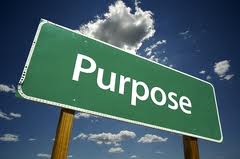The first paragraph of this chapter indicates that understanding the act of will itself is necessary for beginning effective training of the will. As well, engaging in act-ion is part of the training of the will, which can lead to the will's "progressive ascent through the attainment of strength, skill, goodness and universality." Carrying out acts of will relies on understanding the stages of the act of will, and also increases the capacities of the various aspects of will.
There are six stages or phases in the act of will. They are linked, and the outcome of willed actions is dependent on the strength of each link. The stages are:
- Purpose (goal), Evaluation (valuing), Motivation, Intention
- Deliberation
- Choice and Decision
- Affirmation
- Planning - Working out a Program
- Direction of Execution of the Plan
Assagioli notes that individuals may have difficulties with any of the stages, and may, depending on the individual and his or her circumstances, get stuck in any stage of the act of will. Yet, if the individual understands the stages, he or she can analyze where s/he gets stuck. Then s/he can consciously strengthen his or her ability to work through that step.
Four elements are grouped in the first stage of the act of will: purpose, evaluation (valuing), motivation and intention. Assagioli says these four elements are necessarily interconnected. We often become conscious of one element first and then become aware of the others.
We can become aware of much through self-observation, he says, but when it comes to motivation, there are both conscious and unconscious dimensions. Some motives originate in unconscious drives or urges, and the conscious mind will then rationalize a desired action. Assagioli notes that "there is almost alwas a combination of the two (conscious and unconscious motivations) in very variable proportions." That is why we need to analyze our motivations accurately, either through self-analysis or through working with a therapist or educator.
In the process of addressing increasing awareness of motives, Assagioli notes that his technique of "acting as if" is sometimes looked upon as being inauthentic or false. In reality, he says, it is a leaning toward acting in alignment with our real will rather than acting upon so-called lower motives. He emphasizes we can do this with integrity. "This is due to the psychological multiplicity that exits in each of us." If, however, the "lower" motives have a lot of energy, we are best served if we do not deny or repress them, but instead, discharge, transmute or sublimate them.
Assagioli recommends distinguishing between urges or drives, and reasons. Drives or urges can be either conscious or unconscious. They spontaneously move us in the direction or their fulfillment. On the other hand, reasons are conscious, "and have a cognitive, mental aspect." Because of our multiplicity, at times our motives are in conflict with each other. And yet, sometimes lower and higher motives are actually in synch with each other, too. A Talmudic saying, here quoted by Assagioli, points to being able to utilize even our lower motives, "Serve God both with your bad impulses and with your good impulses." Having motivations in synch allows us to "direct(...) all the biopsychological tendencies to higher purposes and creative activities." The advantages of enlisting lower motives in service to higher ones are listed:
He further examines the situation of being motivated by so-called lower motives and claims that these do not necessarily result in an act (product) that is objectively of an inferior quality. Assagioli says that such lower motives can actually help us move forward in our "higher" aims. He gives us as an example, the use of both a "stick" (shame) and a "carrot" (reward) method that relies on some lower motivation to help us with a higher aim. The important thing is "to make sure that the lower motives are aligned with the higher motives, and that it is these that are in control and determine the action."
Assagioli summarizes this stage of the act of will, outlining what a person needs to do to complete this stage:
In the process of addressing increasing awareness of motives, Assagioli notes that his technique of "acting as if" is sometimes looked upon as being inauthentic or false. In reality, he says, it is a leaning toward acting in alignment with our real will rather than acting upon so-called lower motives. He emphasizes we can do this with integrity. "This is due to the psychological multiplicity that exits in each of us." If, however, the "lower" motives have a lot of energy, we are best served if we do not deny or repress them, but instead, discharge, transmute or sublimate them.
Assagioli recommends distinguishing between urges or drives, and reasons. Drives or urges can be either conscious or unconscious. They spontaneously move us in the direction or their fulfillment. On the other hand, reasons are conscious, "and have a cognitive, mental aspect." Because of our multiplicity, at times our motives are in conflict with each other. And yet, sometimes lower and higher motives are actually in synch with each other, too. A Talmudic saying, here quoted by Assagioli, points to being able to utilize even our lower motives, "Serve God both with your bad impulses and with your good impulses." Having motivations in synch allows us to "direct(...) all the biopsychological tendencies to higher purposes and creative activities." The advantages of enlisting lower motives in service to higher ones are listed:
- we avoid condemnation and repression of the lower drives into the unconscious
- we can use the "potent" energies of lower drives in productive rather than destructive ways, or balance them with an opposing tendency
- the "very energies themselves become transmuted and sublimated through being redirected to higher ends."
He further examines the situation of being motivated by so-called lower motives and claims that these do not necessarily result in an act (product) that is objectively of an inferior quality. Assagioli says that such lower motives can actually help us move forward in our "higher" aims. He gives us as an example, the use of both a "stick" (shame) and a "carrot" (reward) method that relies on some lower motivation to help us with a higher aim. The important thing is "to make sure that the lower motives are aligned with the higher motives, and that it is these that are in control and determine the action."
Assagioli summarizes this stage of the act of will, outlining what a person needs to do to complete this stage:
- "That person must get his goals or purposes clearly in view."
- "Then he must evaluate his goals"
- "he will examine his motives trying to become aware of the unconscious ones"
- "motives must be aroused and used"
- "Psychological energies must be set into motion and used with clear intent in the service of a higher good; must be mustered and combined so that the will can effectively proceed to action that will lead from goals to accomplishment."
The above set of internal actions lead to zest which is needed to make "deliberate examination of the ways...to actually achieve a given aim." Thus, the first stage engages the "dynamism of (one's) motives," without which one will "remain only a dreamer instead of the doer of willed action."






